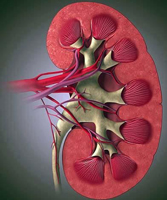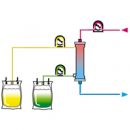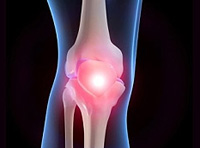Ischemic nephropathy - the disease is almost asymptomatic. As doctors say, it is necessary to assume. What signs allow you to suspect the ischemic nephropathy and what to do to confirm or refute this diagnosis - read further in the article.
Content

The main features allow to suspect coronary nephropathy:
- Terminal renal failure, developed in persons who did not have clinical manifestations of kidney lesion (proteinuria minimum or absent, meager urinary syndrome);
- age for over 60 years;
- the presence of generalized atherosclerosis;
- Frequent development of arterial hypertension.
Currently, it is proved that the ischemic nephropathy is quite widespread, although often remains not diagnosed.
In patients of elderly and senile age, ischemic nephropathy is one of the leading causes of the impairment of the kidney function. Among patients with terminal renal failure under the age of 50 years, ischemic nephropathy is 15%.
Generally accepted approved modern classification of coronary diseases of the kidney currently does not exist. More often, the ischemic nephropathy is classified for 2 criteria:
- The rate of progression of renal failure, highlighting the acute (fast-driving) and chronic;
- Localization of the lesion of the renal arteries (the arteries of the kidney of a large, medium and small caliber).
As the most common cause of ischemic kidney disease, atherosclerosis is recognized, which gave reason to allocate an atherosclerotic form of coronary sickness of the kidneys.
What happens? With almost complete defeat of the arteries, an acute renal failure is developing with the actual cessation of kidney blood supply. If the vessels are not completely amazed, then the blood supply to the kidneys is partially restored and the ischemic nephropathy progresses not so quickly.
There are three main options for the flow of ischemic nephropathy:
- acute renal failure;
- fast-moving renal failure;
- Thorpid (sluggish) chronic renal failure.

Acute renal failure is caused by a sudden impaired of kidney vessels and renal blood flow. The following signs are evidenced by the following signs - acute lifting of blood pressure, leukocytosis, fever, intensive pain in the field of kidneys or back. The course of acute renal failure is usually a low-power.
Cholesterol crystal blood clocks - the main cause of the development of fast-crossing renal failure in ischemic nephropathy.
In the pathological process, except the kidneys, leather, nervous system, gastrointestinal tract are involved. Symptoms that help recognize this type of renal failure, are the rapid rise of blood creatinine, an increase in blood pressure, pain, nausea, vomiting, gastrointestinal bleeding, necrosis of the fingers stop, noded erythema and others.
Cholesterol crystal vessels are confirmed by the detection of crystals in skin particles, muscles, many internal organs - first of all, kidney, as well as in the liver, pancreas and other organs.
Torpid (sluggish) renal failure - the most common clinical option of ischemic nephropathy. As a rule, this clinical form is diagnosed only when conducting special functional studies of vessels (with arteriography research, the use of duplex ultrasonography and T.D.) or with autopsy. However, it is important to remember that the reality of the vascular defeat of the kidneys is high in sick elderly when they identify generalized atherosclerosis.
The diagnosis of ischemic nephropathy can be suspected in patients:
- in an inexplicable increase in creatinine in an elderly person with minimal changes in the urine;
- with meaningful (more than 30-40% of the initial values) increase creatinine or the development of acute renal failure after the appointment of ACE inhibitors;
- with the development of pulmonary edema in a patient with poorly controlled arterial hypertension and chronic renal failure;
- in the presence of refractory arterial hypertension;
- with the development of arterial hypertension and azotemia (increased content in the blood of nitrogenous products) in a patient with transplanted kidney;
- When identifying progressive azotemia in a patient with vascular lesions (coronary arteries, brain vessels, lower extremities, abdominal aortic aneurysms and T. D.);
- in the presence of noise in the projection of the renal arteries;
- With a long history of smoking.
In the presence of manifestations of ischemic nephropathy or the above clinical situations, at which the risk of developing this pathology is high, to clarify the diagnosis and development of the tactics of therapeutic measures, it is necessary to conduct confirming the diagnosis of instrumental research.
These studies include: duplex ultrasonography, radioisotope renography, nuclear magnetic. The sensitivity and specificity of these methods ranges from 83 to 100%. In recent years, the method of spiral computer angiography has been widespread for the diagnosis of ischemic nephropathy.
Currently, progress has been made in surgical treatment of renal arteries. It is reported on the successful use of balloon angioplasty and the success of new technological approaches to surgical correction of lesions - installation of stent.
With moderately pronounced renal failure, conservative measures are aimed at braking the progression of renal failure.
Thus, the ischemic nephropathy is a group of diseases very diverse in its manifestations. The disease forecast is still heavy. However, the use of modern conservative therapy aimed at the correction of arterial hypertension and braking of renal failure, and the active introduction of new technologies of intravascular interventions make it possible to assume a significant improvement in the survival of patients with this severe pathology.









